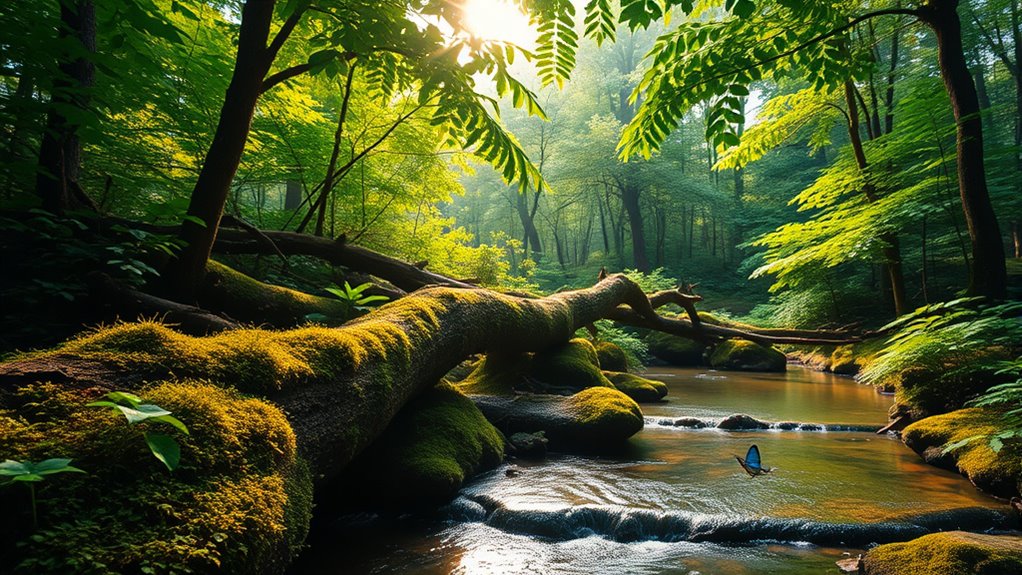Biophonic sounds are natural frequencies produced by living organisms and can add authentic, biodiverse textures to your music. By capturing these sounds carefully with suitable equipment, you can create immersive, emotionally rich compositions that reflect ecosystems and promote ecological awareness. Integrating nature’s acoustic signature not only deepens listener connection but also inspires innovative sound design. To explore techniques, ethical considerations, and inspiring examples, keep exploring how biophony can transform your musical creations.
Key Takeaways
- Biophonic sounds are natural organism-generated frequencies that can be integrated into music to enhance authenticity and ecological awareness.
- Incorporating natural frequencies creates immersive soundscapes that evoke emotional responses and deepen listener connection.
- Techniques for integration include selecting appropriate recording equipment and seamless editing to blend natural and musical elements.
- Using AI and immersive sound design allows for dynamic biophonic melodies and personalized environmental soundscapes.
- Ethical considerations involve capturing sounds responsibly to preserve ecosystems while enriching music with nature’s frequencies.
Understanding Biophony: Nature’s Acoustic Signature
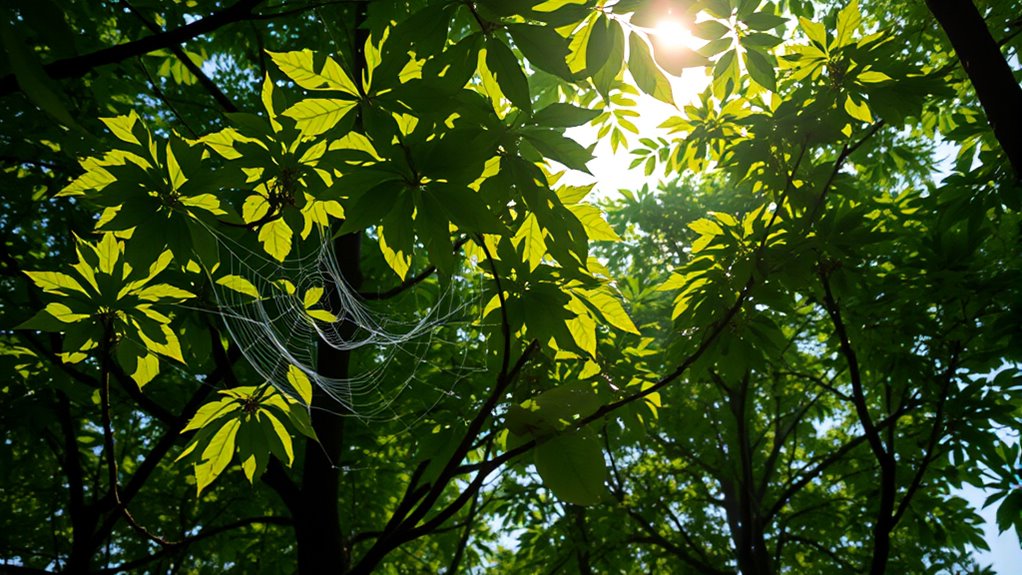
Biophony refers to the collective sounds produced by living organisms in a given environment, creating what’s known as nature’s acoustic signature. This signature reflects the rich diversity of life and plays a essential role in acoustic ecology, the study of soundscapes and their relationship to ecosystems. You’ll notice that many natural sounds carry sound symbolism, where specific noises evoke particular meanings or emotions, like bird calls signaling territory or alerting others. These sounds are fundamental for understanding how species communicate and interact within their habitats. By paying attention to biophony, you gain insight into the health and balance of ecosystems. Ultimately, recognizing nature’s acoustic signature helps you appreciate the intricate connections between living beings and their environment through sound.
The Role of Natural Sounds in Modern Composition
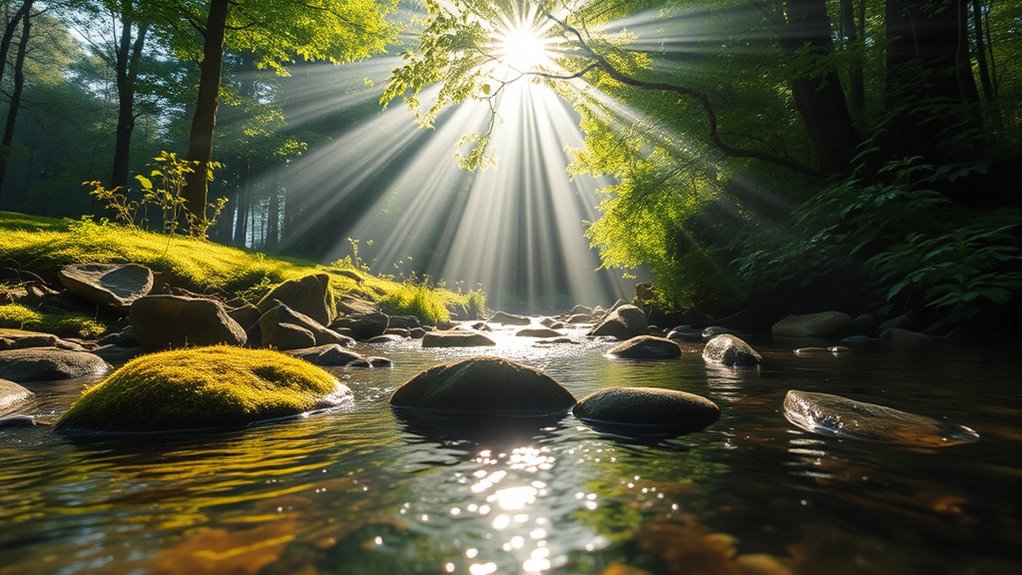
Natural sounds can add emotional depth to modern compositions, making music feel more authentic and immersive. They also serve as a bridge between nature and technology, inspiring innovative sounds and textures. By incorporating biophonic elements, you can create compositions that resonate more deeply with your audience.
Enhancing Emotional Depth
Incorporating natural sounds into modern compositions can profoundly deepen the emotional impact of a piece. Biophonic symbolism allows you to evoke specific feelings by referencing the familiar sounds of nature, creating a sense of comfort, nostalgia, or awe. These sounds tap into primal cues, connecting listeners with their subconscious memories and emotions. Auditory healing benefits from this integration, as natural sounds can reduce stress and foster calmness. When you weave bird songs or flowing water into your music, you’re not just adding texture—you’re enriching the emotional landscape. This approach transforms simple melodies into immersive experiences that resonate on a deeper level, helping your audience feel more connected and emotionally engaged with your work. Incorporating natural sounds into your compositions can also enhance the overall sensory experience, making your music more memorable and impactful.
Bridging Nature and Technology
As technology advances, artists and composers increasingly blend organic sounds with digital tools to create immersive musical experiences. This fusion highlights natural harmonics, where the subtle overtones of nature’s sounds enrich compositions. By integrating field recordings and biophonic elements, musicians tap into sonic ecology, fostering a deeper connection between listeners and the environment. Using digital manipulation, natural sounds can be transformed, emphasizing their harmonic qualities and weaving them seamlessly into modern music. This approach not only preserves the authenticity of natural sounds but also pushes creative boundaries, forging a bridge between nature and technology. Additionally, the rising influence of entertainment giants like WWE Raw and top female singers demonstrates how natural and crafted sounds can enhance audience engagement, contributing to the global entertainment industry. Ultimately, it encourages a new appreciation for the role of natural sounds in shaping innovative, environmentally conscious compositions.
Techniques for Capturing and Incorporating Environmental Audio
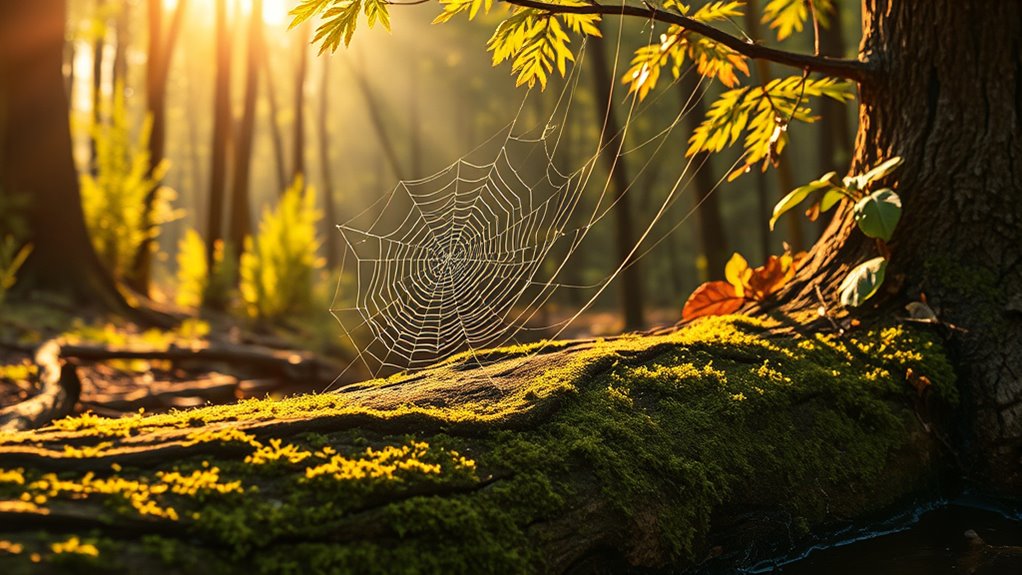
To effectively capture environmental audio, you need to choose the right equipment based on your setting and goals. Proper editing helps guarantee the sounds blend naturally without jarring shifts. Paying attention to these techniques lets you create seamless, authentic soundscapes for your compositions. Additionally, understanding the importance of color accuracy in audio recording environments can help you select the appropriate microphones and settings to faithfully reproduce natural sounds.
Equipment Selection Methods
Selecting the right equipment is essential for capturing high-quality environmental audio, and your choice depends on the specific soundscape you aim to record. To evoke emotion, consider these methods:
- Prioritize instrument compatibility, ensuring your gear suits the natural sounds you seek.
- Choose microphone selection carefully—directional mics capture distant sounds, while omnidirectional mics pick up ambient noise.
- Use portable, weather-resistant equipment to access remote or outdoor environments without compromising quality.
- Pay attention to bedroom acoustics, as the surrounding environment can significantly influence the clarity and warmth of the recordings.
Editing for Natural Flow
Once you’ve chosen the right equipment, the next step is to focus on editing your recordings to create a natural and seamless soundscape. To achieve this, use techniques that preserve environmental authenticity, supporting soundscape storytelling and acoustic ecology. Start by trimming unwanted noise and blending layers smoothly. Pay attention to pacing, ensuring transitions mimic natural flow. Use fades and volume adjustments sparingly to avoid abrupt changes. Consider spatial placement to enhance realism, making listeners feel immersed. Incorporating soundscape continuity ensures your recordings maintain ecological integrity and immersive quality.
The Influence of Biophonic Elements on Musical Mood and Atmosphere
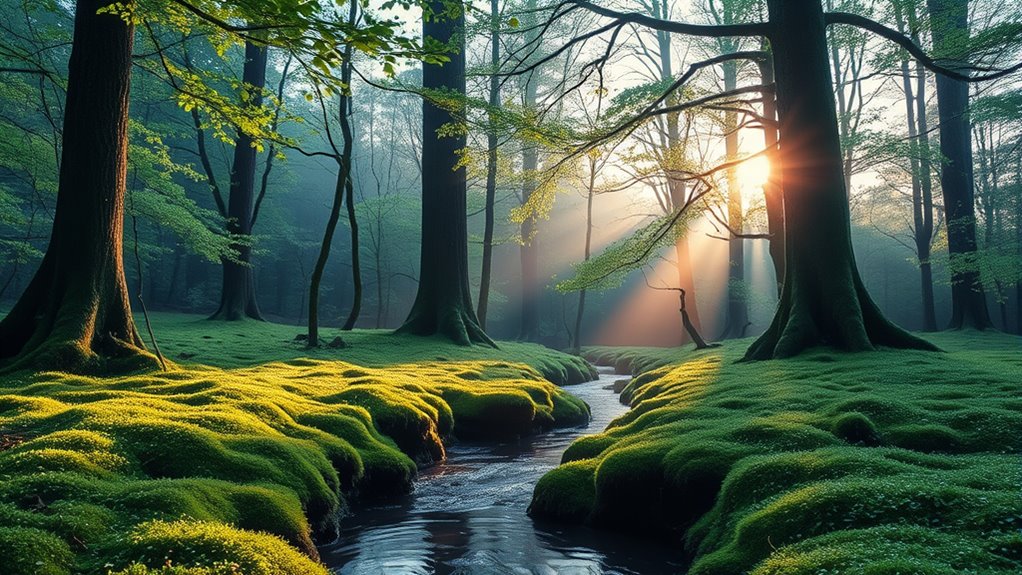
Biophonic elements, such as natural sounds from wildlife and environmental sources, substantially shape the mood and atmosphere of music. Integrating forest melodies and water harmonies can evoke deep emotional responses. These sounds create a sense of calm, wonder, or nostalgia, influencing how you feel while listening. Consider how a gentle stream’s water harmonies can soothe your mind, or how distant bird calls in forest melodies evoke curiosity. Using these elements, you can craft music that transports listeners to tranquil natural settings. To enhance mood and atmosphere, focus on:
Incorporate natural water and forest sounds to deepen emotional connection and create tranquil atmospheres in music.
- Using water harmonies to promote relaxation and serenity
- Incorporating forest melodies to evoke mystery or nostalgia
- Blending natural sounds seamlessly to deepen emotional impact
Additionally, understanding the biophonic qualities of these sounds can help you select the most effective natural recordings for your compositions.
Case Studies: Artists and Projects Merging Nature’S Frequencies With Music
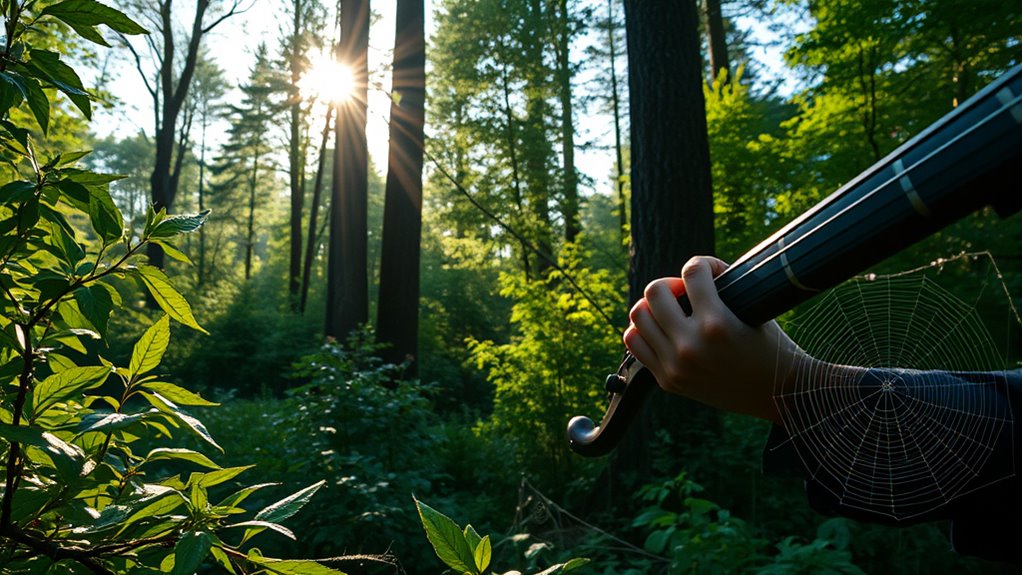
Many contemporary artists and projects are actively merging nature’s frequencies with music to create immersive auditory experiences. These endeavors exemplify Nature Integration, where natural sounds are woven seamlessly into compositions, heightening listener connection to the environment. For instance, some artists record ambient sounds from forests, oceans, or wetlands, then incorporate them into their tracks to evoke specific moods or promote ecological awareness. These projects often emphasize Ecological Impact, aiming to foster appreciation and stewardship of natural habitats. By blending biophonic elements with traditional instrumentation, artists not only craft unique soundscapes but also highlight the importance of preserving ecosystems. Such initiatives serve as powerful reminders of our interconnectedness with nature, inspiring audiences to contemplate their environmental footprint through engaging, sonically rich experiences. Additionally, incorporating nature-inspired sounds such as wind, water, or wildlife can deepen the listener’s emotional response and strengthen the ecological message conveyed through the music.
Technological Innovations Facilitating Eco-Conscious Sound Design
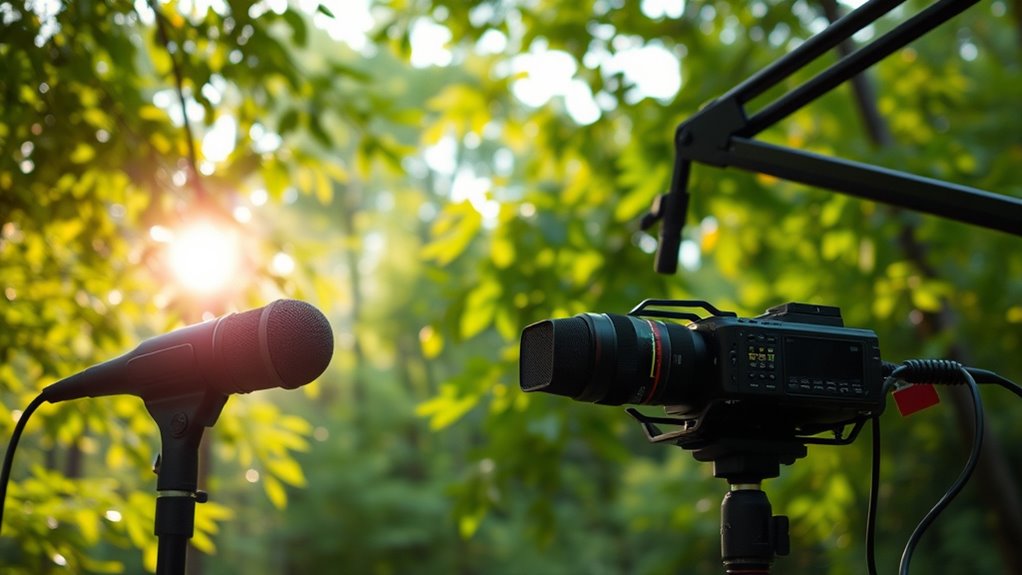
Advancements in technology are revolutionizing how artists and sound designers create eco-conscious soundscapes. These innovations enhance sound therapy practices and deepen our understanding of acoustic ecology, fostering more sustainable music creation. Incorporating knowledge of operating hours can also help artists plan the best times to record or collaborate, ensuring minimal disruption to local wildlife and ecosystems. These tools empower you to craft compositions that honor nature’s frequencies, encouraging listeners to reconnect with the environment while supporting sustainable artistic practices.
Challenges and Ethical Considerations in Using Natural Soundscapes
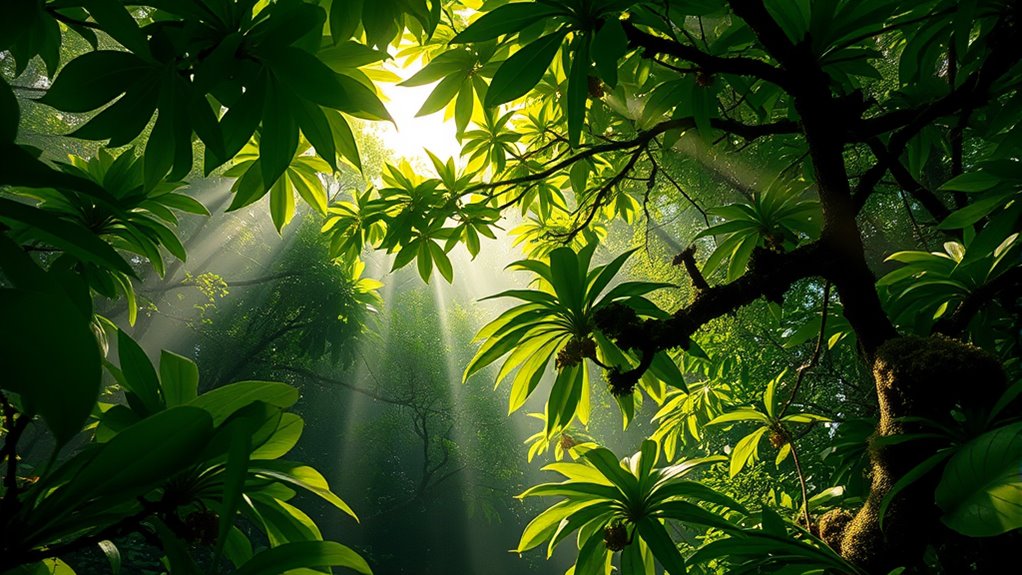
As technology makes it easier to capture and manipulate natural soundscapes, ethical dilemmas and conservation concerns come to the forefront. You must consider whether recording and using these sounds respects the environment and local ecosystems. For example, capturing sounds without disturbing wildlife or disrupting habitats raises ethical questions. Additionally, there’s the risk that commercializing natural soundscapes could lead to overuse or exploitation, threatening conservation efforts. You need to balance artistic or educational goals with the responsibility to preserve nature’s integrity. It’s vital to engage with local communities and conservation organizations to ensure your work doesn’t harm or devalue natural habitats. Managing these ethical considerations helps protect ecosystems while enabling meaningful integration of biophonic sounds into music. When planning recordings, consulting retail hours can help avoid busy times that might increase disturbance to wildlife and habitats.
Future Trends in Biophonic-Inspired Musical Creativity

Emerging technologies like AI and immersive sound design are opening new horizons for biophonic-inspired musical creativity. You’ll see composers blending natural soundscapes with synthetic melodies through digital synthesis, creating immersive experiences that reconnect listeners with nature. This innovation allows you to craft sounds that evoke emotion and deepen environmental awareness. Future trends include:
Emerging tech like AI and immersive sound design enhance biophonic-inspired music, blending natural soundscapes with synthetic melodies for emotional depth.
- Personalized soundscapes—tailoring natural-inspired music to individual environments and moods.
- AI-driven composition—using algorithms to generate unique biophonic melodies that evolve in real-time.
- Interactive installations—integrating digital synthesis with natural sounds, engaging audiences on a visceral level.
- Incorporating natural soundscapes into digital music production further enhances the authenticity and emotional impact of biophonic-inspired works.
These advancements empower you to push the boundaries of musical expression, blending technology and nature into compelling, emotionally resonant works.
Connecting Audiences With the Environment Through Sound Art

Sound art has the power to bridge audiences with the environment by immersing them in natural soundscapes that evoke both presence and reflection. By integrating wildlife acoustics, you can highlight the richness of ecosystems often hidden behind urban noise. These sound installations draw attention to the contrast between natural sounds and the persistent hum of city life, encouraging listeners to reconnect with nature’s rhythms. When you experience these compositions, you become more aware of how urban environments drown out essential wildlife signals. Sound art transforms passive listening into active engagement, fostering a deeper understanding of ecological health. Through this approach, you not only enjoy a sensory experience but also gain insight into the importance of preserving natural soundscapes amid growing urbanization.
Frequently Asked Questions
How Does Biophonic Music Impact Listener’S Emotional and Physiological Responses?
When you listen to biophonic music, you often experience enhanced emotional resilience and improved physiological regulation. The natural frequencies can calm your nervous system, reducing stress and anxiety, while fostering positive emotions. You might notice better focus, a sense of peace, and emotional balance. This music helps your body and mind synchronize with nature’s rhythms, promoting overall well-being and deepening your connection to the natural world.
Can Biophonic Sounds Be Ethically Sourced Without Disturbing Natural Habitats?
When it comes to sourcing biophonic sounds ethically, you need to walk the line carefully. You don’t want to disturb wildlife, so focus on ethical recording practices that prioritize wildlife conservation. Use non-invasive methods and avoid disrupting animal habitats. It’s a tall order, but with responsible techniques, you can capture nature’s symphony without causing harm. Respect for the environment guarantees you preserve the very sounds that inspire your music.
What Legal Considerations Exist for Sampling Protected Wildlife Sounds in Music?
When sampling protected wildlife sounds in your music, you must consider legal issues like intellectual property rights and wildlife protection laws. You can’t just record or use these sounds without permission, especially if they’re protected by copyright or if the animals are endangered. Always research local regulations, obtain necessary licenses, and respect wildlife protection laws to avoid legal trouble and make sure your work supports conservation efforts instead of harming habitats.
How Do Different Ecosystems Influence the Characteristics of Their Biophonic Soundscapes?
You notice that ecosystem acoustics are shaped by habitat diversity, which influences the variety and frequency of sounds. Forests produce layered bird calls and rustling leaves, while wetlands feature amphibian croaks and water movements. These differences reflect each ecosystem’s unique habitat diversity, affecting how sounds propagate. By understanding these variations, you can better appreciate how ecosystems influence their biophonic soundscapes, creating distinct auditory environments that reveal ecological health and complexity.
Are There Accessible Tools for Amateur Musicians to Incorporate Natural Sounds Into Compositions?
You can easily incorporate natural sounds into your music using accessible tools like field recordings and digital apps. Many apps let you record, edit, and layer sounds from nature, making it simple for amateur musicians to add biophonic elements to their compositions. These tools are user-friendly, affordable, and perfect for experimenting with natural frequencies, helping you create more immersive, organic soundscapes without needing professional equipment.
Conclusion
As you explore the world of biophonic sounds, you’ll discover how nature’s frequencies can deeply enhance your musical creativity and emotional impact. By integrating natural soundscapes, you can forge a stronger connection between listeners and the environment. Isn’t it time you let the Earth’s own symphony inspire your next composition? Embrace these sounds, and watch your music transform into a powerful, eco-conscious experience that resonates beyond the studio.

